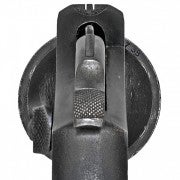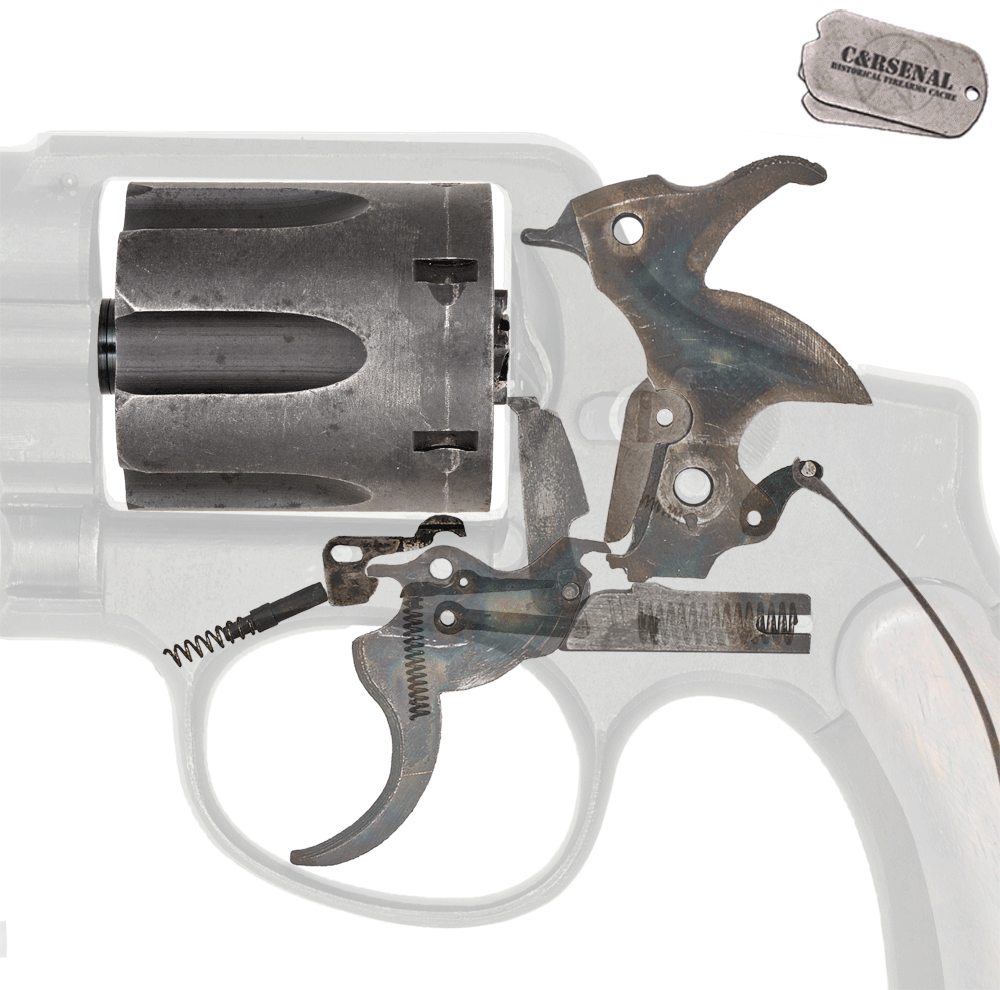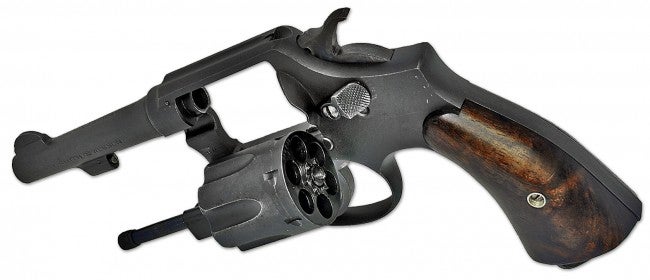Most people recognize the name “Victory” revolver, but the history is just a smidge complicated. Let’s go over just how this .38 six shooter made it into WWII.
Early in WWII the UK contracted with S&W, and paid a large advance, to develop a light carbine that would serve a role similar to the M1 Carbine. Unfortunately, S&W’s work wasn’t up to the inspector’s standards and the project was scrapped. When the British demanded their advance back, S&W couldn’t pay, having spent it on tooling up and initial production. Instead, in 1940 an agreement was made to produce their K-frame M&P revolver in .38 S&W at a reduced cost in large numbers to repay their debt. The .38 S&W chambering shared the same dimensions and was easily strong enough for the British .38/200 cartridge, which made these interchangeable with their Enfield No.2 and Webley MkIV revolvers.
In 1940 the U.S. Navy was expanding fast and had placed orders for thousands of S&W Model 1905s with lanyard rings. While these are not exactly Victories, they are nearly identical. These revolvers were marked on the backstrap with “U.S.N.C.P.C.” and were issued to free up M1911A1 pistols for front line use (keeping just one pistol cartridge on the battlefield). These eventually became popular with aircrew for their lighter weight and smaller profile.
 Now, with the beginning of the Lend-Lease program we see British S&W revolvers marked “U.S. Property.” This was basically some political loop hole jumping and these guns, chambered in .38 S&W and bearing British markings, didn’t serve with the U.S. But, once the Army entered the fight and began procuring its own version of the S&W M&P in .38 Special, the mark stayed.
Now, with the beginning of the Lend-Lease program we see British S&W revolvers marked “U.S. Property.” This was basically some political loop hole jumping and these guns, chambered in .38 S&W and bearing British markings, didn’t serve with the U.S. But, once the Army entered the fight and began procuring its own version of the S&W M&P in .38 Special, the mark stayed.
Being manufactured for both the Army and Navy, the M&P revolver hit the 1,000,000 serial mark. Generally this is solved by instituting a letter prefix, beginning with “A”. But as a nod to the war effort, a “V” was assigned, for Victory. This gave the M&P, as used by the U.S. and allies, its nickname.
There is a lot more to this history and we cover some of that over at C&Rsenal, but let’s squeeze in one more bit of information in the form of this animation, depicting both single and double action operation of the S&W “Victory.”

 Your Privacy Choices
Your Privacy Choices

